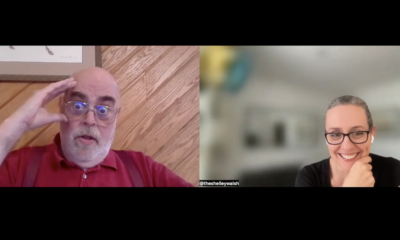2022 will be another year of growth for streaming services, Smart TV adoption and ad-supported video on demand (AVOD). The CTV landscape will continue to mature with more advertisers, more viewers and more robust programmatic offerings and data partnerships.
More streaming
While growth for some subscription services slow down, like for Disney+, old standbys like Netflix see another surge. That’s because viewers bounce around to watch the latest hits, like Squid Game. And when streaming services land another hit, viewers are more likely to cut the cord from linear TV, and replace live TV content they used to watch on cable with OTT services like YouTube TV, fuboTV or Sling. And those are ad-supported, with ads frequently sold programmatically.
When ads are bought and sold programmatically, campaigns can be planned across other digital channels, and this is why programmatic buys are gaining a bigger slice of overall ad sales. In 2022, U.S. digital display ad spending through programmatic is projected to climb to $115 billion, or over 90% of digital display ad spending.
CTV and cross channel ad surge
“In addition to further adoption of CTV, we will see an uptick in cross channel media investments as consumer confidence grows along with CTV,” said Jon Schulz, CMO of advertising software company Viant Technology Inc.
In 2022, marketers will reach audiences who cut the cord by placing more ads through programmatic CTV. But they will also have to maintain some presence on linear, because the transition to digital TV isn’t complete. Instead, it’s a fragmented landscape that will influence how advertisers buy TV ads at this year’s Upfronts.
“TV viewership continues to skyrocket, with CTV at the forefront of that growth and consumer engagement,” said Iván Markman, Yahoo’s Chief Business Officer. “In 2022, brands will refine their strategies and unlock incremental linear reach with CTV spend. But with fragmentation across linear and CTV viewing, robust frequency management across both will be critical to the effective use of ad dollars.”
Activating more ads programmatically
Markman added, “The Upfronts have become more CTV-centric. And when it makes up a third of Upfront spend, it’s no longer experimental – it’s a mainstay. At the same time, the important task of eliminating overlap and excess household frequency will require advertisers to increase the sophistication of their CTV buys.”
This nuanced approach includes buying a higher percentage of CTV buys at Upfronts, but then activating more of the ads programmatically, he said. It will also lead to less programmatic guaranteed ad buys, and more bidding in private or open marketplaces.
“These changes will allow advertisers to more dynamically and granularly manage reach and frequency for their campaigns,” Markman stated. “As consumer behavior continues to shift at what seems to be an unattainable pace, marketers seek more agility and optimization.”
More real-time bidding
As things stand now, the majority of CTV ads are served through VAST, the standard developed by the Interactive Advertising Bureau (IAB) to show ads on a video player on laptop and desktop computers, as well as on mobile devices.
In the upcoming year, Open Real Time Bidding (oRTB) will gain momentum, as advertisers will be triggering more automatic bids to get even more relevant audiences for ads.
“By the end of 2022, I expect most programmatic bids to arrive at the ad server through oRTB and other advanced integrations,” said Matt McLeggon, Senior Vice President, Advanced Solutions for SSP Magnite. “This transformative development will unify decisioning across programmatic and traditional direct, unlocking increased efficiency and revenue, easing competitive separation and programmatic guaranteed execution, and accelerating the overall migration of CTV to programmatic.”
Live sports
It’s not just scripted TV hits that are attracting viewers to streaming services. More live sports will be headed to streaming as well. In 2022, for instance, Amazon Prime will be broadcasting Thursday Night Football exclusively. NBC, in turn, renewed its deal with the English Premier League, and will show many of those games on Peacock streaming.
These are “watershed” deals that will impact the entire TV landscape, according to Kevin Krim, CEO of ad measurement and analytics company EDO.
“Here’s what it means for advertisers: First, making increasingly complex investment decisions with confidence requires measuring across platforms consistently,” he said. “Second, since similar types of programming will be on myriad platforms, ‘linear vs. streaming’ will be a concept of the past. Investment choices will be between the immediate reach and impact of live event advertising versus the longer tail and finer targeting of ‘watch when you want’ programming.”
CTV has brought a lot of disruption to traditional TV viewing behavior, especially with hit shows being watched on-demand. Now the migration of live sports to streaming will create another wave of disruption. The viewers will still be viewing this popular content, but it will be up to advertisers and their adtech partners to determine where they’re watching it.













![YouTube Ad Specs, Sizes, and Examples [2024 Update] YouTube Ad Specs, Sizes, and Examples](https://articles.entireweb.com/wp-content/uploads/2024/06/YouTube-Ad-Specs-Sizes-and-Examples-400x240.jpg)
![YouTube Ad Specs, Sizes, and Examples [2024 Update] YouTube Ad Specs, Sizes, and Examples](https://articles.entireweb.com/wp-content/uploads/2024/06/YouTube-Ad-Specs-Sizes-and-Examples-80x80.jpg)






You must be logged in to post a comment Login